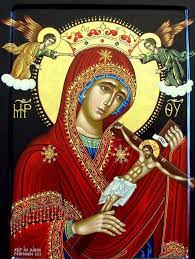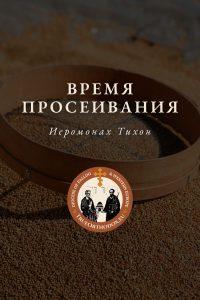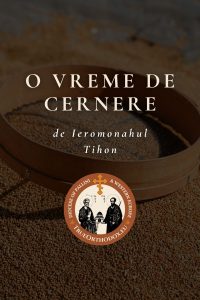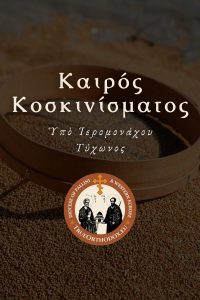STAVROTHEOTOKION

by Vladimir Moss
Today we celebrate a rare and deeply meaningful coincidence of two great feasts: the Annunciation of Mary, the Most Holy Mother of God (Theotokos), and the Holy Cross (Stavros) of our Lord, God and Saviour Jesus Christ. In explicating this coincidence, I believe we can come closer to understanding the difference between Orthodoxy and the heresy of Protestantism.
The Orthodox believe that on this day God became man; the Son of God, the Second Person of the Holy Trinity and the Creator of the universe, took on His soul and body from Mary His Mother. It is important to understand what this means. Mary was a Virgin, and remained a Virgin not only before, but also during and after her giving birth to Christ. That is, Christ had no human father; the whole of His human nature, 100% of His genes, He received from the Virgin Mary. That is, they were as close, physically and psychologically, as any two human beings could be. Every other human being inherits his human nature from two parents, a mother and a father. Christ alone received His human nature from one parent only.
Several other facts follow from this primary fact. First, since Christ was and is the All-Perfect God, He could not be joined even to the slightest degree to any moral defilement, to sin. This means that Mary at the time of the Annunciation must have been perfect and without sin. But how was this possible in view of the fact, affirmed by the Orthodox but denied by the Roman Catholics, that Mary inherited the original sin of Adam and Eve through her parents? The answer, as St. John of Damascus explains, is that at the Annunciation Mary was cleansed of all sin, including original sin, by the Holy Spirit. For, as the holy Archangel Gabriel told her, “the Holy Spirit will come upon you”, which will make it possible for “the Power of the Most High” – that is, the Son of the Most High – “to overshadow you” and become man inside your womb (Luke 1.35).
Secondly, this means that while Christ is, as St. Paul says, the only Mediator between God and man (I Timothy 2.5), for only He is both God and man, the Mother of God is the mediator in the sense that without her mediation God could not have become man. For already five thousand years had passed since the original sin, and in that long, long period not one woman had appeared on earth who struggled so valiantly against sin as to make it possible for her to become the Mother of God. Mary was the first and only woman who struggled successfully against every impulse to sin that her fallen nature suggested to her. She could not remove the original sin from her body and soul, but she did remove the consequences of that “root of corruption” as far as was humanly possible. So when she was born, the path was open at last – after a 5000-year wait – to the incarnation of God and the salvation of man.
So far a conservative-minded Protestant might agree with us (although in practice very few do). But then he might object: “Granted that Mary was a virgin of outstanding virtue, and not simply a ‘biological channel’ for Christ’s incarnation, as some of my co-religionists put it. But that does not make her the saviour! It is surely blasphemous to say, as you Orthodox say all the time: ’Most Holy Mother of God, save us!’ “
In answer to this objection, let us consider today’s second feast, that of the Holy Cross…
The Orthodox Church teaches that it was Christ, and Christ alone, who saved us on the Cross. For He alone could offer the expiatory Sacrifice that wiped out our sins, reconciling us to the Holy Trinity. He alone is the Lamb of God Who takes away the sins of the whole world.
But we must also not forget that the Mother of God was present at the Cross and suffered terribly with her Son, in accordance with the prophecy of St. Simeon the God-Receiver: “A sword shall pierce through thy soul also“ (Luke2.24). The union of Christ and His Mother in the suffering of the Cross is emphasized by the Church at the Divine services on every Wednesday, when the usual Theotokion, or hymn to the Mother of God, is replaced by a Stavrotheotokion, or hymn to the Mother of God at the Cross. For just as Adam and Eve were united in the original sin, which brought death on all their descendants, so the New Adam and the New Eve were united in the redemption from that sin, which brought resurrection to all their descendants. For the New Eve, like the old Eve, was created to be “a help, like [or comparable to] the man” (Genesis 2.18, 20); and she surely helped Him to an incomparable degree by providing Him with the holy Body in which He accomplished the salvation of the world! Nor must her helping Him in the sense of suffering with Him on the Cross be underestimated. In the Garden of Gethsemane we read that “an angel appeared to Him from heaven, strengthening Him” (Luke 22.43). If Christ in His created human nature did not scorn the help of a creature in the form of an angel, strengthening Him in the moment of His agony, why should He scorn the help of His own Mother at the moment of His still greater agony on the Cross? For St. Paul writes: “Neither is man independent of woman, nor woman independent of man, in the Lord” (I Corinthians 11.11).
The work of our salvation is therefore the work of Christ and the Mother of God together. He, as the perfect Man, could not have done this great work without the help of her, His Mother and Bride; for she was His help, in all things like unto Him, the perfect Woman. Therefore let us not be ashamed to proclaim: “Most Holy Mother of God, save us!”
March 25 / April 7, 2024.





